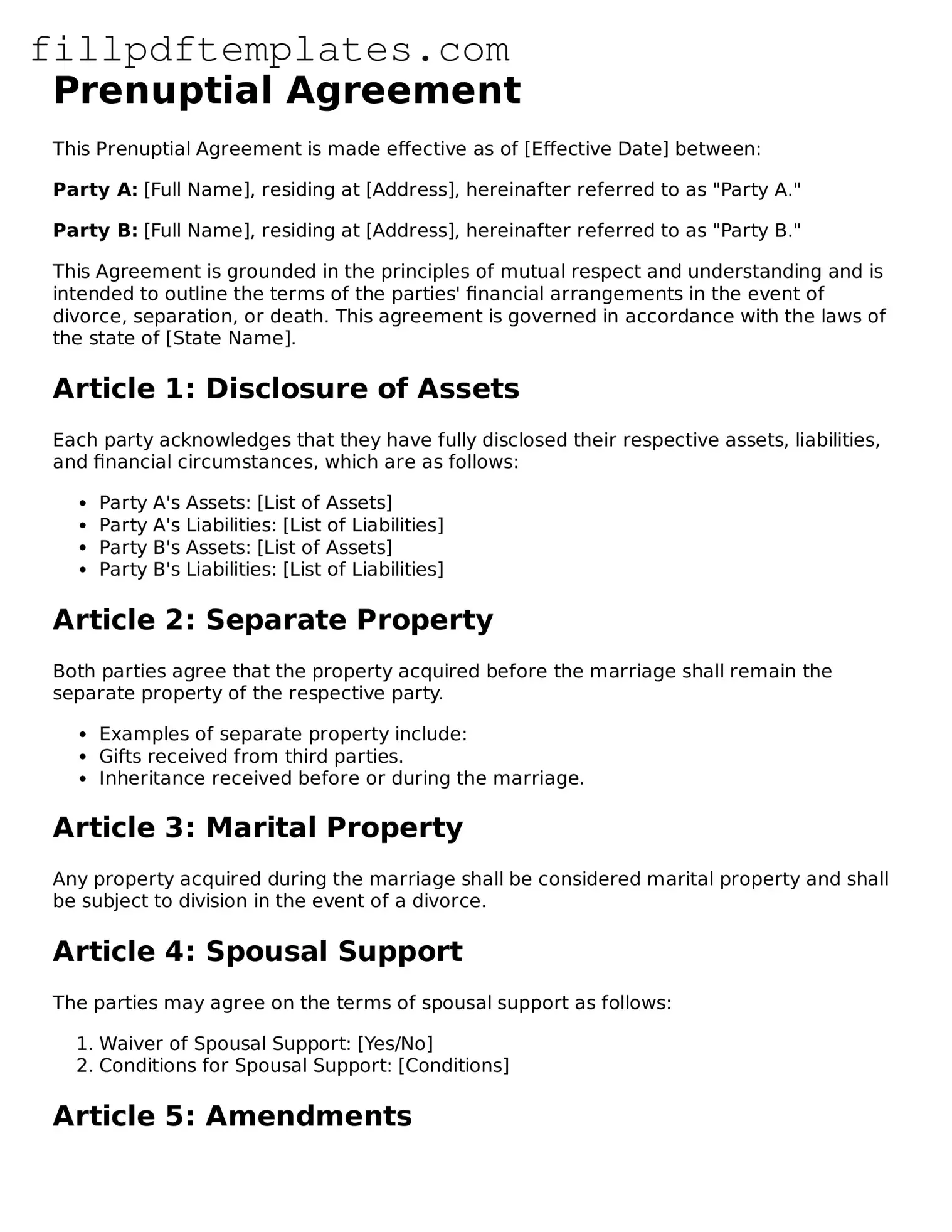Prenuptial Agreement
This Prenuptial Agreement is made effective as of [Effective Date] between:
Party A: [Full Name], residing at [Address], hereinafter referred to as "Party A."
Party B: [Full Name], residing at [Address], hereinafter referred to as "Party B."
This Agreement is grounded in the principles of mutual respect and understanding and is intended to outline the terms of the parties' financial arrangements in the event of divorce, separation, or death. This agreement is governed in accordance with the laws of the state of [State Name].
Article 1: Disclosure of Assets
Each party acknowledges that they have fully disclosed their respective assets, liabilities, and financial circumstances, which are as follows:
- Party A's Assets: [List of Assets]
- Party A's Liabilities: [List of Liabilities]
- Party B's Assets: [List of Assets]
- Party B's Liabilities: [List of Liabilities]
Article 2: Separate Property
Both parties agree that the property acquired before the marriage shall remain the separate property of the respective party.
- Examples of separate property include:
- Gifts received from third parties.
- Inheritance received before or during the marriage.
Article 3: Marital Property
Any property acquired during the marriage shall be considered marital property and shall be subject to division in the event of a divorce.
Article 4: Spousal Support
The parties may agree on the terms of spousal support as follows:
- Waiver of Spousal Support: [Yes/No]
- Conditions for Spousal Support: [Conditions]
Article 5: Amendments
Any amendments to this Prenuptial Agreement must be made in writing and signed by both parties.
Article 6: Governing Law
This Agreement shall be governed by and construed in accordance with the laws of the state of [State Name].
Signatures
IN WITNESS WHEREOF, the parties hereunto set their hands to this Prenuptial Agreement on [Date].
Party A Signature: ________________________
Party B Signature: ________________________
Witness Signature: ________________________
Date: ________________________
